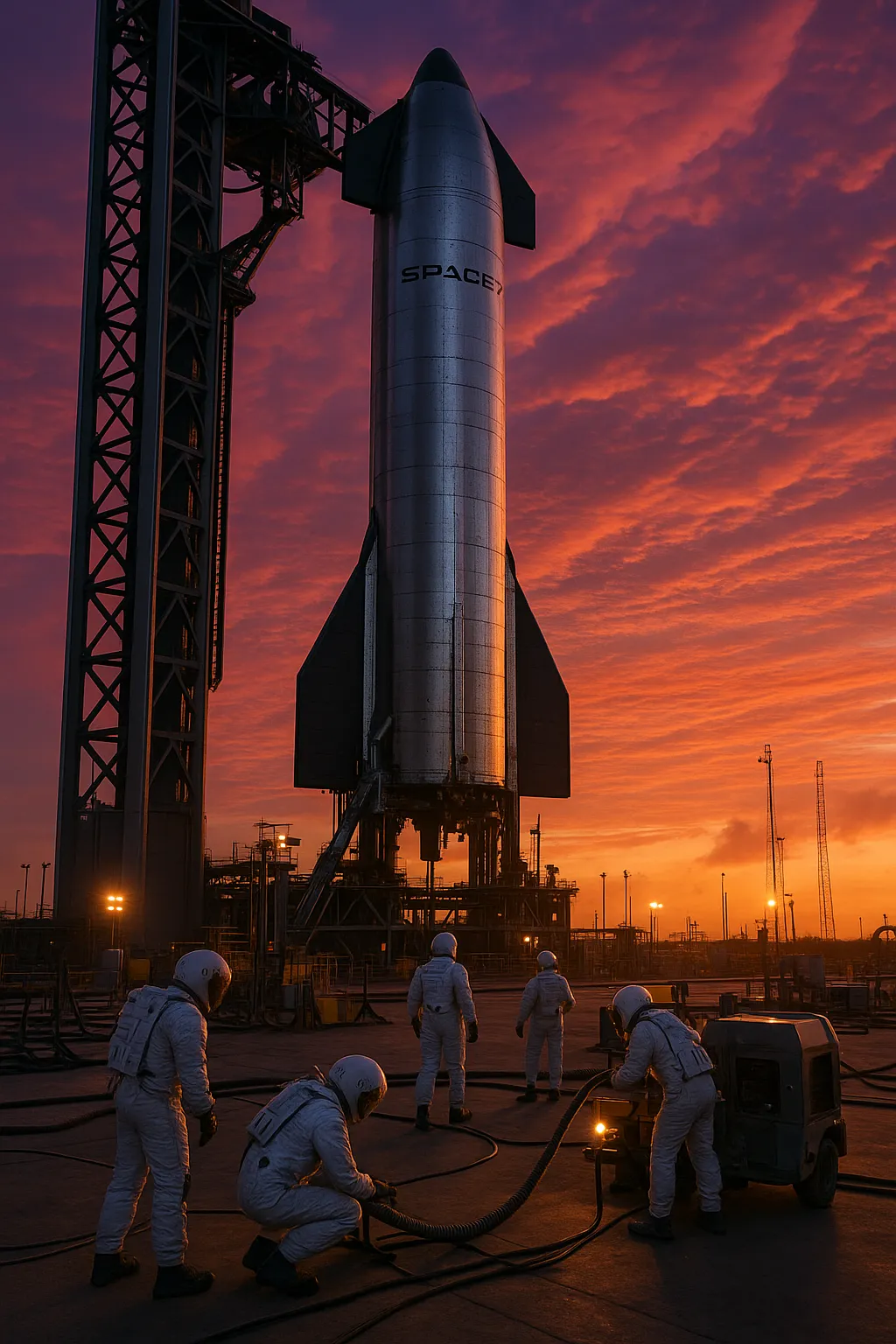SpaceX Delays Tenth Starship Test Flight to Troubleshoot Ground Systems

BROWNSVILLE, Texas (August 25, 2025) - SpaceX on Monday called off the highly anticipated tenth flight test of its Starship megarocket, citing an unspecified issue with ground support equipment that emerged just 30 minutes before the window was set to open. The liftoff had been scheduled for 7:30 p.m. EDT (6:30 p.m. CDT) at the company’s Starbase facility near Boca Chica Beach.
Standing down “from today’s tenth flight of Starship to allow time to troubleshoot an issue with ground systems,” the company announced on its social media feed, X, at approximately 7:00 p.m. EDT. SpaceX did not immediately provide details on the nature of the malfunction but emphasized that the scrub was precautionary to ensure both mission success and operational safety.
The tenth integrated test flight, designated Flight 10, was designed to validate critical maneuvers for both stages of the fully reusable system. Super Heavy booster 16 was to perform a flip and boost-back burn before splashing down in the Gulf of Mexico, while the upper stage, Ship 37, was slated to ignite its engines in orbit, deploy eight Starlink mass simulators, and attempt an in-space relight before reentering and descending under controlled conditions into the Indian Ocean.
SpaceX maintains two backup days-Tuesday, August 25, and Wednesday, August 26-for alternative launch attempts. A company spokesperson stated that teams would conduct thorough diagnostics overnight, with a revised target date to be announced pending resolution of the ground systems issue. Analysts note that while delays are common during iterative development, each postponement adds pressure as NASA eyes Starship for its next-generation lunar missions under the Artemis program.
Elon Musk has underscored that iterative testing and rapid troubleshooting are integral to Starship’s evolution, stating on X: “Success uncertain, entertainment is guaranteed!” Despite setbacks in Flights 7, 8 and 9, SpaceX’s leadership remains committed to ironing out technical challenges ahead of the spacecraft’s inaugural crewed voyage to the Moon and, ultimately, Mars.
Mission Objectives for Flight 10
- Perform controlled booster flip, boost-back and splashdown in the Gulf of Mexico
- Execute upper stage orbital maneuvers, dummy payload deployment and engine relight
- Demonstrate heat shield integrity during reentry and splashdown in the Indian Ocean
As SpaceX engineers address the ground systems anomaly, attention now turns to the next available window. Space enthusiasts worldwide will be watching whether Flight 10 can break the streak of non-ideal outcomes and bring the Starship program closer to operational reality.
Categories
Beauty and fashion Business and finance Climate Entertainment Food and drink Games Health Hobbies and leisure Jobs and education Law and government Other Politics Science Shopping Sports Technology Travel and transportationRecent Posts
Tags